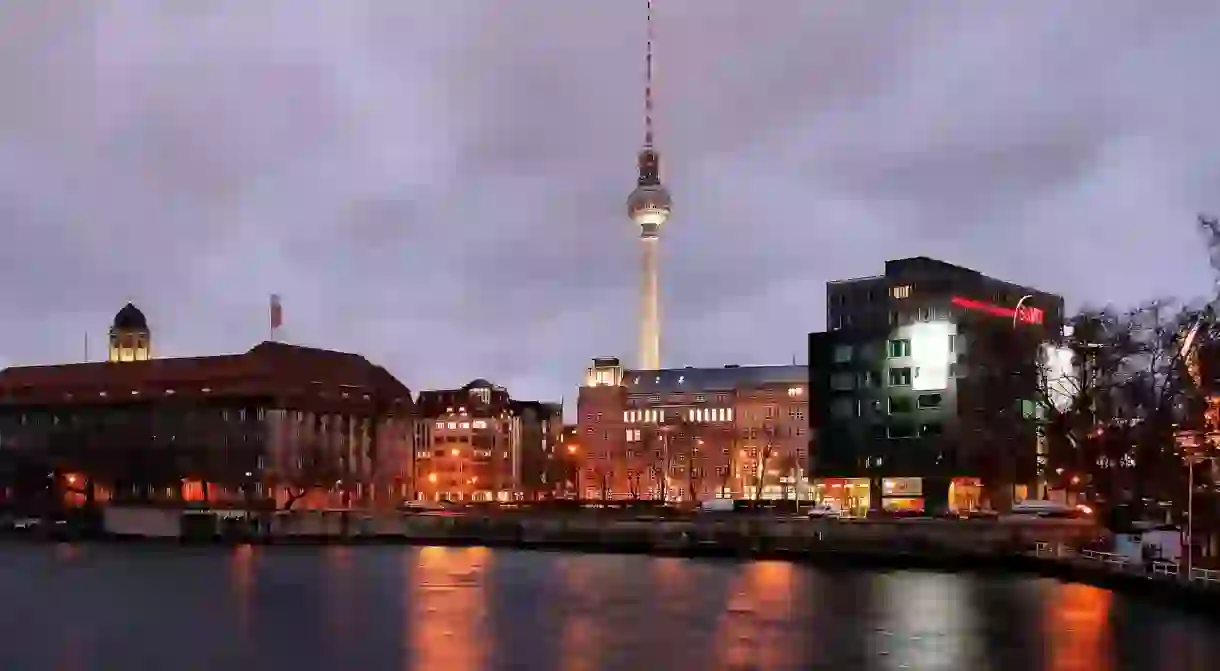10 Quirky Things That all Berliners Love

Berliners are a multifarious bunch, united by a common love for their city, a set of open, accepting values and a number of quirky things. Here are the top things all Berliners love, that you’ll also fall in love with when visiting the German capital.
Ampelmann
The Ampelmann or Ampelmännchen is a beloved East German traffic light symbol that’s synonymous with Berlin. Prior to Germany’s reunification, East and West Berlin had two different traffic light figures, with West Germany sporting a generic male figure, while the East had a cool character wearing a hat. After the fall of the Wall, the sign became a mascot for East Germans and eventually, all Berliners grew to love the now iconic figure, which has been adopted across the city’s traffic lights and evolved into its own brand and beloved souvenir for anyone visiting the city.

Wreaking havoc
Berliners love a good protest and they’re always there to show up, fight for and stand against anything that harms both their local and the global community. This affection for organised political demonstrations all comes to a head on May 1, known as May Day, when the city ignites in a display of protests, clashes with police and street parties. Though this date sees workers’ and similar events internationally, today’s Berlin May Day has roots back to Berlin’s reunification and embodies the city’s love of wreaking havoc.

Currywurst
Currywurst is hands down the locals’ favourite street food, and can be found dotted around Berlin. As the proud innovators of the typically German dish, Berliners love the rich curry-ketchup and sausage dish which is as delicious as it is simple.

Political graffiti
In Berlin, a city with a turbulent past and influential cultural and political landscape, street art often paints a picture of global political shifts and opinions of its residences. From sections of the former Berlin Wall to bold murals on urban streets and political scribblings on unassuming walls, Berlin is adorned with vibrant, exciting and politically rife graffiti.

Club-Mate
The caffeinated beverage of choice for tech-bros and club kids alike, Club Mate is the German soft-drink that keeps Berliners buzzing. The mate-extract drink can be found at local spätis, as a cocktail stable in clubs and in the hands of most Berliners as an energising drink. It is brewed in Münchsteinach and is now an unofficial symbol of late-night culture in the capital.

Recycling
The incentivised recycling or pfand system in Germany has given locals bragging rights as the country with the highest recycling rates in Europe. It’s no surprise then that plastic and glass bottles are treated as a commodity of their own in Berlin, where locals can return their empty bottles at supermarkets for a small payoff.

Being naked
Getting naked in Germany is nothing to bat an eyelid at, with saunas, outdoor pools, lakes, parks and many other nature spots boasting a bare-all ethos. Furthermore, the German movement, Freikörperkultur (FKK), which translates to Free Body Culture, endorses this naturalistic approach to sports and community living, advocating for a safe and open culture around bare-bods. For locals being naked is no big deal and for visitors and expats, it’s a liberating, albeit a bit daunting, attitude to adopt.

Wild swimming
Going hand in hand with FKK is Berliners’ love for wild swimming at the local lakes. Although the inland city is miles away from the coast, it is surrounded by an array of lakes suitable for swimming – and on sweltering summer days in the German capital, it’s rare to find a lake that isn’t jam-packed with Berliners.

Cafe culture
When it comes to afternoon breaks, the British have tea and scones and the Germans coffee and cake. It’s a tradition that can still be found throughout Berlin, despite the rise of third-wave and expat owned cafes. A beloved Sunday pastime, sitting down in a local cafe for some coffee and cake is a relaxing ritual that both locals and visitors can delight in.

Sexy parties
The permissive party culture of Berlin has long delighted locals and tourists alike, with the city’s clubs drawing in roughly 40,000 to 50,000 partygoers each weekend. Dating back to the 1930s, Berlin has a long history of open-minded, sexually explorative and debaucherous parties, making it the city’s calling card today.













